An Alphabet Menagerie
By Isabel Frances Bellows
Annotations by Kathryn T. Burt/JB

A, was an Amiable Ape, Who lived on an African cape. He climbed up the trees On his elbows and knees – And came down by the fire escape.

C, was a Comical Cat Who tried to make love to a rat. She sang him a song Both loving and long, But he said "You can't fool me like that!"

E, was an Eminent Elephant Who invented a thing called a Telephant When they asked: "What's it for?" He replied: "Such a bore To be pestered with questions irrelevant!"
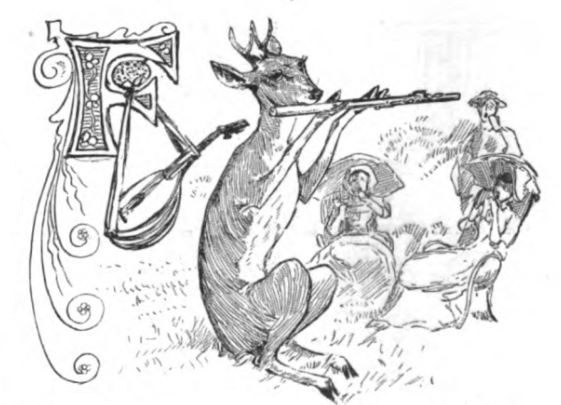
G, was a Greedy old Goat Who ate up his master's best coat He stood by with a leer While they searched far and near And remarked: "They seem rather afloat!"

I, was an Idle Ichneumon[2] Who wanted to learn to play Schumann[3], But he found to his pains, It took talent and brains; And neither possessed this Ichneumon.

K, was a Keen Kangaroo, Who painted his children sky-blue. When his wife said: "My dear, Don't you think they look queer?" He replied "I'm not sure but they do"

M, was a Merry young Mink[4], Who went in to skate at a rink. But he said that the ice Was too hard to be nice, And too smooth to allow him to think
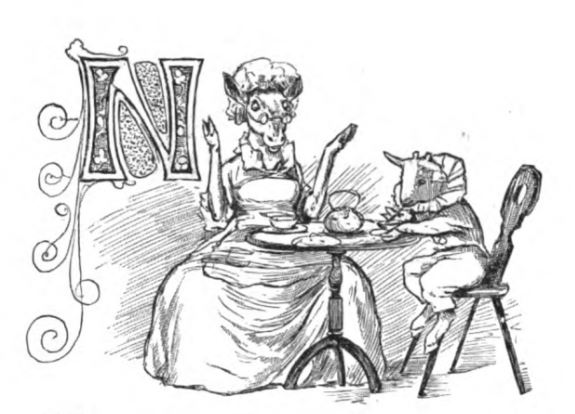
O, was an Obese Old Ox Who wanted to learn how to box A teacher he hired Who nearly expired At the first of his terrible knocks!

Q, was a Quarrelsome Quagga[6] Who made a great bluster and swagger But what was quite queer When danger was near No trace could be found of the bragger.

S, was a Senseless old Sheep Who spent all his time half asleep. He was thinking, he said, When he nodded his head, But his friends thought that tale rather steep

U's a Unique Unicorn Who tried to peek over his horn He said he saw more Than he e'er did before But it made him feel rather folorn.
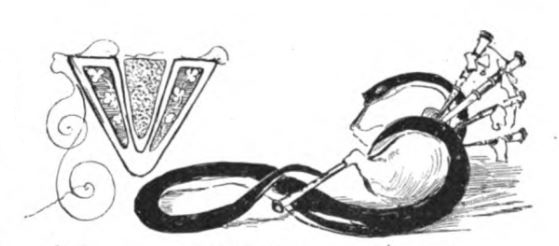
W's a Wan little Weasel, Who spent all his days at his easel. His friends came to see What they thought was a tree. But he called it a "Study of Teasel[8]"


B, was a Bustling old Bear, Who thought he must have change of air; So he went with a show, Though it filled him with woe To see people so rude as to stare.

D, was a Dainty old Dog, Who every day drank an egg nog. He took it he said, To steady his head, In case there should come up a fog!

F, was a Frivolous Fawn Who gave a soireé[1] on the lawn He played on the flute And sang to a lute But the guests would do nothing but yawn

H, was a Hopeful young Horse Who was brought up on love without force He had his own way And they sugared his hay; So he never was naughty of course!
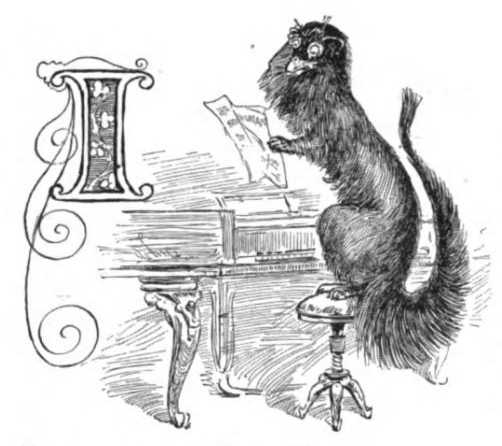
J, was a Jaunty Jaguar, Who once took a ride in a car; But when asked for his fare, Gave a growl and a stare, And remarked: That is going too far!

L, was a Lively old Lion, Whose conduct no man could rely on. For he'd smile and look sweet At the people he'd meet, And be thinking which one he should fly on!

N, was a Naïve Nylghau[5] Who would take his tea through a straw When his Aunt said "I think 'Twould be better to drink" He replied "You had better withdraw!"
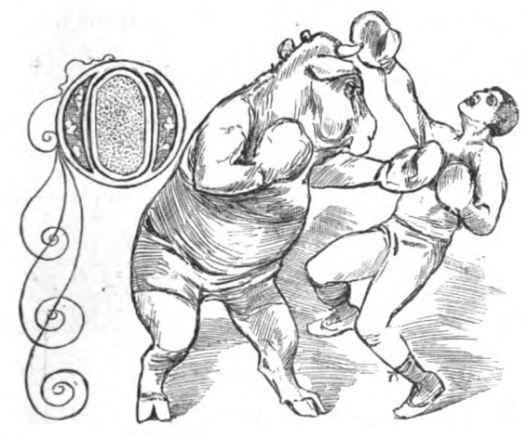
P, was a Prosy old Pig, Who complained that his brain was too big. He felt it, he said, Inside of his head – Which was certainly strange, for a pig!
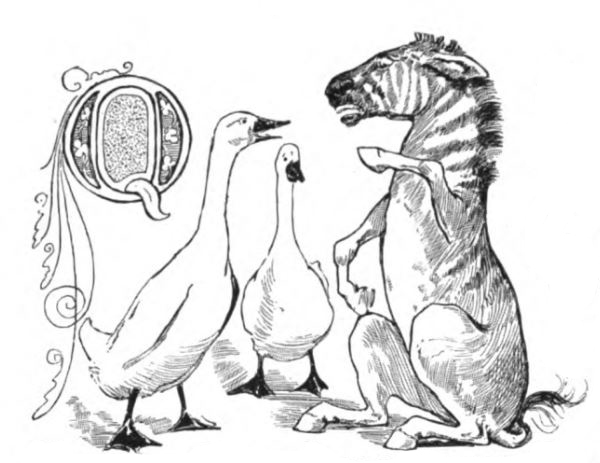
R, was a Rowdy young Rabbit Who had a most terrible habit! When he saw any food Which appeared to him good He would rise from his chair, and just grab it.

T, was a Terrible Tiger, Whose name was Abdullah Meshigah. For lunch he would eat Forty two kinds of meat And his postal address was "The Niger."[7]

V, was a Verdant old Viper Who let himself out as a piper But so badly he played That the dancers all said They would wait til his talents were riper
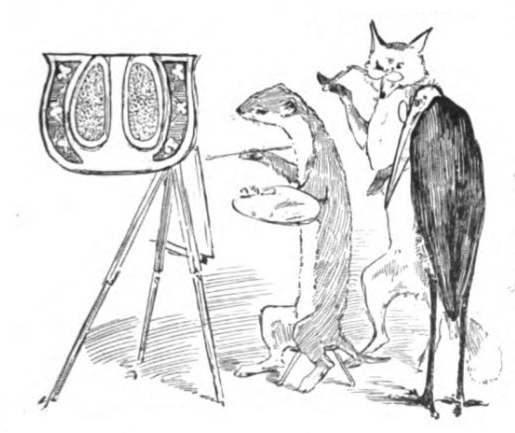
X, Y, and Z, were three creatures With all sorts of fabulous features. They had talons, and claws, And fiery jaws. But their names haven't happened to reach us!
Bellows, Isabel Frances. “An Alphabet Menagerie.” St. Nicholas: An Illustrated Magazine for Young Folks 11, no. 5 (March 1884): 382-87.
[1] A French word for a party typically held in the evening.
[2] A species of mongoose—a small mammal that looks similar to a ferret or meerkat—also known as the Egyptian mongoose.
[3] Since the illustration shows the ichneumon at a piano, this likely refers to playing music by German composer Robert Schumann.
[4] A small semiaquatic mammal related to weasels, otters, and ferrets.
[5] Sometimes spelled “nilgai,” a nylghau is a species of antelope from Northern India.
[6] A subspecies of the zebra that is now extinct.
[7] Not to be confused with Nigeria, the Niger is a country on the Niger River (the Republic of Niger) that became independent in 1960. The area that modern-day Niger is in was part of the Bornu Empire area, which several West African empires and states had long contested. The French occupied Niger in the late 19th century and made it a colony in 1922.
[8] A teasel is a flowering plant often used as a natural comb for cleaning and disentangling wool.
Contexts
According to Lawrence C. Stedman and Carl F. Kaestle, the U.S. tracked the nation’s literacy with a question about the ability to read and write any language in every decennial census from 1840 to 1930 (78). Although the accuracy of this data collection method has since been questioned, Kaestle et al. nonetheless contend that the 1880s mark an interesting time in American history “when the population was broadly if not highly literate, and the nation was on the verge of a rapid expansion of popular printed material and a slower but steady expansion of secondary education” (xv). For more on the history of literacy in the United States, see Literacy in the United States: Readers and Reading Since 1880.
Resources for Further Study
- See Nyr Indictor’s clever and fascinating article “Alphabet Poems: A Brief History” for a crash course in the genre of alphabet poetry, which extends far beyond the realm of our modern alphabet. The abecedarian form derives from the Latin abecedarius (of or according to the alphabet). It refers to a poem in which each verse or line begins with a letter in alphabetical order. According to the Oxford English Dictionary, the earliest use of “abecedary” regarding poetry dates to the late 16th century, and early usage often referred to religious psalms and proverbs.
- The University of Michigan Museum of Zoology Animal Diversity Web (ADW) has information on the ichneumon or Egyptian mongoose.
- Find out more about the nylghau, also known as the nilgai or nilgai antelope, from ADW.
- Read about the now-extinct quagga on the ADW website. There is an effort to restore the animal, the last of which died in 1883, led by the Quagga Project.
- This brief overview of Niger’s history includes early African tribes and kingdoms, French colonization, and independence to the late 20th century. A more thorough history is available from Cambridge University Press.